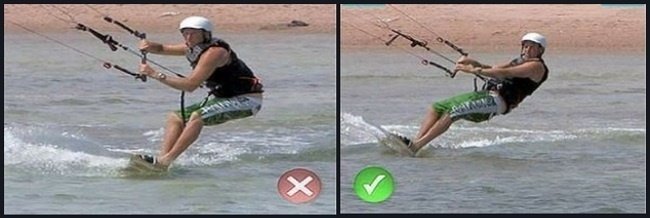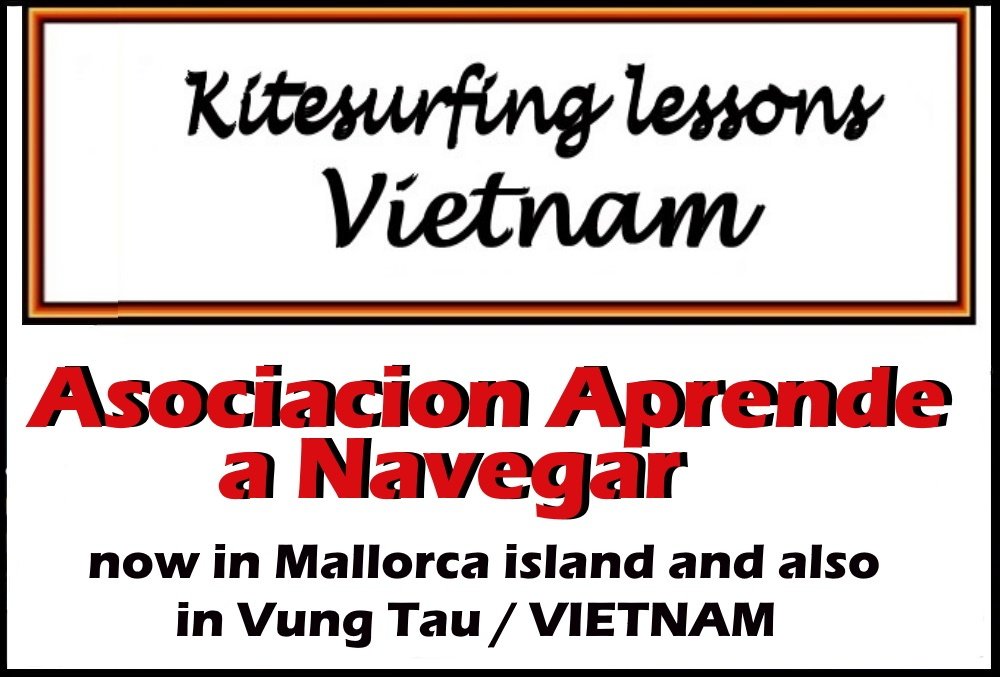How to kitesurf upwind
How to kitesurf and get upwind. This is one of the main problems during our first kitesurfing sessions
Today we are going to talk about one of the bases of a good navigation. After learning to control the kite and start with our first rides, the next step is to try to gain height in the wind, that is, to ride upwind
To go kitesurfing upwind, you need to combine several techniques and factors
For this it is necessary to understand some key concepts, we are going to read them carefully and try to put them into practice whenever we kitesurf
Kitesurf facing the wind – going upwind
1. speed
If the wind is strong enough, speed will not be a problem. In fact, you may need to slow down a bit to get upwind

Too much speed will prevent you from going upwind enough
The faster you go, the more you create “apparent wind”, which has the effect of pushing the wind window behind you, which makes it more difficult to go upwind.
If the wind is light, it’s also a bit complicated. You will have to work your sail through the wind window to generate enough speed.
You may also need to go slightly downwind to gain speed before you start to go upwind. This means that you will take a large curved line to your destination, where your starting point is
2. Edge
You must ride on an edge angle and orient the board in the desired direction, rather than letting the kite drag you directly downwind

The board will be at an angle of 45 degrees to the water
3. Position of the kite
If you are struggling, consider lowering your kite in the wind window.
The higher the sail in the sky, the more it will pull you vertically upwards, rather than horizontally in the wind

Try to have your kite at 45 degrees or less and you will have better ability to go upwind. It depends of course of the wind force as well

4. Body position
The best position to wind the wind is:
1.- The arms almost stretched (not too bent)
2.- Head and shoulders turned towards the direction of travel (choose a distant marker to aim at and go towards it or close to it). Look where you want to go.
It is important to maintain a correct stance at any point of the navigation, especially when you want to ride upwind. In this case, the best stance to facilitate the ride is to orient the hips and chest in the direction of the kite, that is, trying to turn the body towards the front tip of the board.
A good tip is to be with your front shoulder towards the kite and your chest towards the end of the board. This stance means that we can put more pressure on the board so that it improves our upwind angle

A straight position, with the hips forward helps you to go upwind.
Avoid riding with both knees bent
As said, remember to keep your sail about 45 degrees and so you will lose as little as possible ground, being able to get upwind in kitesurfing along a beach – This will keep you safer if there are a lot of wind gusts also –
Having your kite too high will make you vulnerable to gusts of wind
that will drag you and put you in places you don’t want to be – roads, trees, backyards

Too much speed may end in a lost of control of your kite
3.- Buttocks and hips towards the bar (avoid bending your knees too much)
4.- Extend your front leg. The rear leg is slightly bent. Use this to steer in the wind.
Your feet direct and control the board. More pressure on the front foot means acceleration of the board and falling in the direction of the wind, that is, fall downwind
More pressure on the back foot means slowing the board and going against the wind. Normally we control the speed and the upwind all the time with the back foot, especially with the heel pressure, which keeps the edge of the board in the water and does not let the board drift and consequently lose height in the wind, I mean , prevents us from drifting

The most important thing is that by increasing the pressure with the back foot, the kite goes to the bottom side of the wind window, so it will be easier for us to achieve the upwind
Failure to do any of these things will result in the dreaded “Walk of Shame” – what all kiters want to avoid, walking back to where you started your kitesurfing ride
Basically, this means that you have not been able to ride upwind, that you have drifted in the wind and that you must return to your starting position, where your equipment is located, walking and not kitesurfing
how to learn kitesurfing in one day

Check on the link above how to learn kitesurfing in one day and join our kite school / kitesurfing club in Vung Tau.
We are awaiting for you!
Do you want to learn Kitesurf in Vietnam?
Book your course at the best price
To contact the school click here

